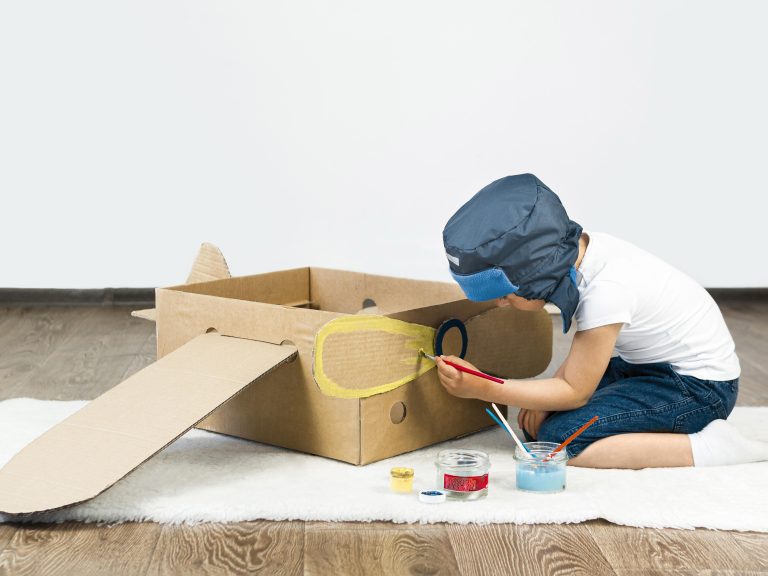The Mom Burnout Recovery Plan: 7 Steps to Get Your Energy Back
You are not just tired. You are burned out.
That matters because the fixes for exhaustion and the fixes for burnout are not the same. This article gives a practical, no-nonsense seven step plan to recover your energy, protect your mental load, and prevent burnout from returning. It is written for stay at home moms and working moms who want things that actually fit real life.
Quick check. If you answer “yes” to two or more of these, read on.
If any of the above is familiar, you are probably facing mom burnout, not ordinary tiredness.
What Is Mom Burnout?
Mom burnout, often called parental burnout, is a specific form of chronic exhaustion caused by long term parenting stress. It includes emotional exhaustion, distancing from your children, a drop in parental satisfaction, and sometimes serious physical and mental health effects. Researchers who study parental burnout point out that it is distinct from everyday fatigue. It builds slowly and shows up as a loss of coping resources rather than a bad night’s sleep. (Frontiers)
For many stay at home moms, the risk increases because the caregiving role has no clear clocking out. The job has constant demands and few predictable breaks. If you are wondering whether this applies to you, read on—this article explains symptoms, causes, and a realistic recovery plan.
Mom Burnout Symptoms Every Mom Should Know
Recognizing symptoms is the first practical step. Here are the common categories with concrete signs to watch for.
Emotional burnout symptoms
Physical burnout symptoms
Mental burnout symptoms
If these symptoms last more than a few weeks, they are likely not just an off season. They are warning signs. One large survey found that a clear majority of parents reported feeling burned out by their responsibilities. In a national survey, about 62 percent of parents said they felt burned out by parenting demands. That illustrates how common this is, not how weak you are. (wexnermedical.osu.edu)
A related point: screens and irregular sleep patterns magnify these symptoms. If your “rest” is scrolling, you are not getting the restorative pause your nervous system needs.
Why Stay at Home Moms Burn Out Faster
There are predictable reasons stay at home moms are highly vulnerable.
- No defined off time. The workday never ends. You can take breaks only when someone else covers you.
- Invisible mental load. The constant planning and anticipating of everyone else’s needs drains executive energy.
- Social isolation. Parenting is lonelier than it looks online. A 2024 survey showed most parents feel isolated and many feel burned out. (wexnermedical.osu.edu)
- Perfection pressure. Social media and cultural expectations create impossible standards.
This is systemic. The right response is not more grit. The right response is structure and fewer daily demands.
For context on the mental load and modern parenting pressures, the article on working mom guilt helps explain how guilt and expectations add fuel to burnout.
The 7-Step Mom Burnout Recovery Plan
These steps are practical and small enough to try tomorrow. They work together. Start with Step 1 and pick one or two others to implement this week.
Short action first.
For the next 48 hours, pick one task you will not manage. Put it on the calendar for someone else. That small experiment will tell you more than a pep talk.
Step 1 — Pause and Acknowledge Your Mom Burnout
Naming the problem removes the shame and gives you permission to act. Say to yourself: “This is burnout. I need a plan.” Then write one sentence: what is the worst immediate thing I can stop doing for a week? Removing one obligation creates psychological space to try other changes.
Practical actions
Step 2 — Reclaim Sleep as Non-Negotiable
Sleep is the foundation of cognitive recovery. Even mild sleep restriction causes measurable drops in attention, memory, and mood. Chronic sleep disruption compounds burnout and makes every decision harder. The neurocognitive literature shows consistent negative effects of sleep loss on executive functioning and mood. Prioritize sleep like you would a medical treatment. (pmc.ncbi.nlm.nih.gov)
Practical actions
Step 3 — Nourish Your Body to Reduce Burnout Symptoms
Food is not a cure but it is fuel. Low blood sugar, dehydration, and high-caffeine habits make mood swings, fatigue, and brain fog worse.
Practical actions
Step 4 — Lighten Your Load as a Stay at Home Mom
You cannot fix all demands. You can change where the work lands. Delegation and outsourcing are practical tools, not moral failures.
Practical actions
When you reduce the daily friction, you gain the energy to parent with patience. Changing how you parent also helps. For tips that reduce daily battles and make delegation stick, see Positive Parenting Tips for Stronger Bonds.
Step 5 — Build in Micro-Breaks That Actually Restore Energy
Short breaks between tasks work. A meta-analysis of micro-break research found that brief recovery activities reduce fatigue and improve vigor and performance. This applies to parenting tasks too: five to ten minute breaks reset your nervous system.
Practical actions
For families who follow routines, you can create natural micro-breaks by aligning them with your children’s independent play or nap windows.
Step 6 — Reconnect with Joy to Beat Mom Burnout
Joy is not a reward for finishing everything. It is medicine. Burnout drains pleasure. Recovery restores it intentionally.
Practical actions
Small and consistent pockets of joy build resilience faster than rare, big treats.
Step 7 — Reset Your Boundaries to Prevent Burnout
Boundaries protect energy. They look different for every family. The point is to choose and enforce limits that make daily life sustainable.
Practical actions
When Mom Burnout Becomes More Serious
Burnout can state-shift into anxiety, depression, or health problems. Red flags include prolonged suicidal thoughts, persistent inability to care for basic needs, or escalating anger that risks harm. Parental burnout has been linked in research to increased risk of neglect and severe emotional distress for parents. If you see these signs, seek professional help promptly. Frontline clinicians and parental burnout researchers recommend therapy, medical evaluation, and structured support for serious cases. (Frontiers)
If you are unsure where to start, contact your primary care doctor, a licensed therapist, or a local parent support program. For a broad look at signs and when to escalate, use trusted local health guidance and professional resources.
FAQs on Mom Burnout
What causes stay at home mom burnout?
An imbalance between demands and resources. Constant caregiving, invisible mental load, social isolation, and unrealistic expectations create sustained strain that erodes coping resources over time.
What are the most common mom burnout symptoms?
Chronic exhaustion, emotional detachment, brain fog, increased irritability, and loss of pleasure in daily life.
How can stay at home moms recover without extra childcare?
Prioritize micro-breaks, protect sleep, make small but consistent boundary changes, and delegate within the home. Even small changes produce measurable benefits if sustained.
Is burnout the same as depression?
They overlap but are not identical. Burnout specifically ties to chronic stress in the parenting role. Depression involves a broader set of symptoms that persist across many areas of life. If your mood does not improve with rest and boundary changes, seek medical evaluation.
How do I prevent burnout from coming back?
Maintain the small routines you put in place. Continue micro-breaks, protect sleep, share the load, and schedule joy. Long term prevention is about systems and steady guardrails, not one-off fixes. For a parenting approach that reduces daily friction, consider strategies in Positive Parenting Tips for Stronger Bonds.
Final Takeaway
Mom burnout is common and real. There is no heroic way out. The practical path back is slow and incremental. Start by naming the problem. Secure better sleep. Lighten the load. Build short, restorative breaks into your day. Rediscover small joys. Protect your boundaries.
If you try one thing this week, try Step 1 and Step 5 together. Name the burnout. Then take two five-minute micro-breaks each day. Those tiny shifts begin the recovery process and will make other steps easier.








